Pick our Information
- classical story (3)
- FACT (49)
- history (56)
- IPTEK (14)
- Just an info guys (21)
- Konspirasi (21)
- LoL (2)
- Music (4)
- Mysterious (39)
- Mythology (11)
- Pengetahuan (19)
- Porn (1)
- The Beatles (2)
- Unik (31)
Friday 30 December 2011
CIA files : The Evolution of US Army HUMINT: Intelligence Operations in the Korean War
Studies in Intelligence Vol. 55, No. 2 (Extracts, June 2011) 57
NEW YEAR CHALLENGE
FUN CHALLENGE
Tantang-tantangan yuk?
"Perubahan memang tidak menjamin
perbaikan, tapi tidak ada perbaikan bisa dicapai tanpa perubahan."
...
Sahabat saya yang baik hatinya,
Saya contohkan 3 kalimat
mengenai "Berubah itu tidak mudah, … di bawah ini, lalu saya mohon Anda
MENERUSKAN dengan kalimat hasil pelajaran, pengamatan, atau kreatifitas
Anda.
1. Berubah itu tidak mudah, itu sebabnya kita harus
segera memulai.
2. Berubah itu tidak mudah, maka ikhlaslah
belajar.
3. Berubah itu tidak mudah, tapi kalau tidak berubah -
mau jadi apa?
Cobalah untuk se-wise, se-filosofis mungkin, dan
bebaslah berkreasi seGokil mungkin, jangan lupa yang lucu dan unyu-unyu
juga ya? Tapi mohon dipastikan tetap santun. Orait?
Kalau
SEANDAINYA nanti Fun Challenge ini memberikan hadiah, ingat ya - yang
berikut ini TIDAK akan diperhitungkan:
1. Tulisan yang
disingkat-singkat.
2. Nama alay yang tidak ada SATU kata nama
manusianya.
3. Nama dan foto profile yang tidak sopan dan
MORBID (meratapi kesedihan dan kematian)
Saya tunggu jawaban
Anda ya?
CIA Akui Kekalahan di Lebanon

Keterangan gambar: para agen CIA Lebanon yang ditayangkan Al Manar baru-baru ini.
Minggu lalu media massa milik Hizbollah, "Almanar" mempublikasikan film tentang bagaimana dinas inteligen Amerika CIA beroperasi di Lebanon, termasuk nama-nama agen mereka yang bekerja sebagai diplomat di kedubes Amerika Lebanon. Beberapa hari sebelumnya Iran juga mengumumkan terbongkarnya jaringan mata-mata Amerika di Iran yang melibatkan 30 agen rahasia mereka. Dua pukulan telak yang dialami aparat inteligen Amerika dalam waktu berdekatan.
Para pejabat Amerika pun akhirnya mengakui terjadinya kemunduran di dua negara tersebut meski menolak membicarakan ditail kemunduran yang dimaksud, demikian sebagaimana ditulis koran terbesar Amerika "New York Times" hari Selasa lalu (14/12). Saat seorang agen rahasia diketahui identitasnya, mustahil mereka untuk tetap menjalankan misinya.
"Para pejabat CIA aktif merekrut agen-agen lokal yang berasal dari berbagai kalangan sosial: pegawai pemerintah, personil keamanan, agamawan, bankir, akademisi, dan lain sebagainya," demikian papar "Al-Manar" dalam laporannya.
Sementara itu koran besar Amerika lainnya, "Washington Post" menulis terbongkarnya jaringan mata-mata Amerika di Lebanon membuat para agen CIA menghadapi resiko keamanan serius. "Washington Post" menyinggung serangkaian penangkapan beberapa agen lokal CIA di Lebanon yang dilakukan Hizbollah dan aparat keamanan Lebanon beberapa waktu lalu.
Amerika secara resmi memasukkan Hizbollah dan Al Manar sebagai organisasi teroris karena dukungannya terhadap perjuangan Palestina dan permusuhannya kepada Israel. Hizbollah telah terlibat peperangan melawan Israel sejak tahun 1982. Organisasi ini, meski menolak disebut sebagai pelaku, diyakini kuat oleh Amerika sebagai pelaku serangan bom terhadap markas marinir Amerika dan Perancis di Lebanon tahun 1983 yang menewaskan ratusan personil militer dan menjadi faktor penentu mundurnya pasukan keamanan Amerika dan Perancis dari Lebanon. Karena serangan-serangan Hizbollah, Israel terpaksa meninggalkan satu demi satu wilayah Lebanon yang didudukinya sejak invasi Israel tahun 1982, dan puncaknya pada tahun 2000 Hizbollah berhasil memaksa Israel menarik seluruh pasukan pendudukannya dari Lebanon Selatan. Pada tahun 2006 Hizbollah berhasil memukul mundur invasi kedua Israel atas Lebanon dalam perang sengit selama 33 hari. Padahal pada invasi pertama tahun 1982 saat Hizbollah belum resmi terbentuk, Israel sukses menduduki sebagian besar wilayah Lebanon hanya dalam waktu seminggu dan mengusir semua pejuang Palestina dari Lebanon serta berhasil memaksa pemerintah Lebanon menandatangani perjanjian damai yang merugikan Lebanon.
Adapun mengenai Al Manar, para pejabat Amerika menyebutnya sebagai media massa yang "tidak kredibel", selain tuduhan sebagai organisasi teroris.
Mengenai laporan yang dibuat Al Manar tersebut di atas, jubir CIA Jennifer Youngblood menolak mengkonfirmasi kebenaran laporan tersebut. "Kami tidak boleh menanggapi klaim yang dibuat oleh organisasi teroris," katanya. "Saya rasa lebih berharga untuk mengingat kembali bahwa Hizbollah adalah organisasi yang berbahaya, dengan Al Manar sebagai alat propaganda mereka. Fakta-fakta itu saja sudah cukup untuk mempertanyakan kredibilitas klaim mereka," tambahnya.
Sebagai perbandingan, klaim bohong Amerika bahwa Irak memiliki senjata pemusnah massal sebagai dalih menyerang Irak, adalah buatan CIA. Jadi bisa dibandingkan mana yang lebih kredibel antara CIA dengan Hizbollah/Al Manar.
Hizbollah dan CIA secara "pribadi" juga telah terlibat dalam perang inteligen di Lebanon sejak tahun 1980-an, terutama setelah CIA terlibat dalam serangan bom yang ditujukan kepada pemimpin Hizbollah Ayatollah Mohammed Hussein Fadlallah, tahun 1984, yang menewaskan ratusan korban jiwa terutama warga sipil. Sayyed Fadlallah sendiri selamat dalam serangan tersebut. Ia meninggal tahun 2010.
Pernyataan Youngblood tidak mengubah fakta bahwa CIA telah menerima temparan keras di Lebanon. Sebagaimana ditulis "New York Times" mengutip seorang pejabat Amerika, "Membenarkan klaim Hezbollah hanya akan menguntungkan kelompok ini. Namun tidak bisa dibantah CIA mengalami kekalahan di Lebanon."
Sementara "Washington Post" mengutip seorang mantan pejabat CIA menyatakan bahwa setidaknya satu nama yang disebutkan Hizbollah, yaitu kepala operasi CIA di Beirut, adalah benar.
Dalam laporan tersebut Hizbollah tidak hanya menyebut nama, melainkan juga detil-detil lainnya seperti nama samaran, tempat pertemuan, cek pembayaran, dan informasi penting lainnya. Hal ini cukup untuk meyakini bahwa laporan Hizbollah sangat akurat seraya mengakui kerja kontra-inteligen mereka yang sangat canggih.
Pada bulan September lalu situs berita Al-Manar mempostingkan dua artikel bersambung berjudul “Is Lebanon Going to Be Theater for New US Tragedy?” yang memaparkan keagalan CIA di Lebanon dan Timur Tengah serta bukti-bukti terjadinya perang inteligen antara CIA melawan Hizbollah.
Sumber:
"CIA Acknowledges “Setbacks” in Lebanon"; Mohamad Shmaysani; almanar.com.lb; 13 Desember 2011
Bumi Merupakan Jupiter Yang Gagal

Planet-planet batuan, termasuk Bumi, sejatinya merupakan planet gas raksasa, seperti Jupiter yang gagal terbentuk. Ini berdasarkan teori pembentukan planet terbaru yang diungkapkan oleh Sergei Nayakshin, astronom University of Leicester.
Seperti diberitakan Space.com, teori pembentukan planet yang umumnya dipercaya saat ini adalah akresi inti. Mulanya, ada piringan gas raksasa di sekitar bintang yang baru lahir.
Partikel debu pada piringan itu bergabung membentuk objek yang lebih besar disebut planetesimal yang kemudian membentuk struktur yang lebih besar.
Akibat proses itu, massa yang terbentuk pun lebih besar. Pada satu massa tertentu, disebut massa kritis, gravitasi akan menarik massa gas dari piringan yang terdapat di sekitar gumpalan tersebut.
Demikianlah, planet batuan kemudian terbentuk dari proses yang panjang dan rumit tersebut.
Teori baru yang diajukan Nayakshin disebut tidal downsizing. Berdasarkan teori ini, gumpalan gas pada awalnya terbentuk di zona yang jauh dari tempat planet umumnya ditemukan sejauh ini.
Dalam prosesnya, gumpalan gas mendingin dan menyusut menjadi planet yang masih tergolong massif, sekitar 10 kali ukuran Jupiter.
Selama penyusutan berlangsung, partikel debu yang terdapat dalam piringan gas bergabung menjadi lebih besar dan kemudian "jatuh" ke bagian tengah gumpalan gas, membentuk padatan yang solid di sana.
Di sinilah akhirnya terbentuk planet batuan primitif dengan pembungkus gumpalan gas di luarnya.
Peristiwa selanjutnya, piringan gas membawa planet primitif ini mendekati bintangnya. Gas pembungkus planet primitif ini kemudian "dimakan" oleh bintang induknya.
Bagian yang "selamat" hanya inti berwujud padat dan sebagian gas, terselamatkan karena massa jenisnya yang tergolong besar.
Proses perampasan gas pembungkus inilah yang kemudian membentuk planet Super Earth atau planet batuan seperti Bumi.
Dengan kata lain, Super Earth dan planet batuan pada dasarnya adalah planet gas yang tak memiliki kesempatan untuk tumbuh dewasa karena mekanisme di semesta serta "kejahatan" sang bintang.
Nayakshin menguraikan teori baru pembentukan planet ini di Monthly Notice jurnal Royal Astronomical Society yang terbit Agustus lalu.
Ia mengakui, sebagai sebuah teori baru, masih banyak kelemahan yang harus ditutupi dan masih harus diuji. Ia berharap para ilmuwan berkenan mengkaji lebih lanjut teori yang dipaparkannya.
Menanggapi teori Nayakhsin, Aaron Boley dari University of Florida yang melakukan penelitian tentang pembentukan planet gas raksasa mengatakan bahwa proses tidal disruption memungkinkan kehidupan berevolusi pada sistem bintang yang lebih bervariasi.
"Ini cara lain alam menciptakan planet," kata Boley. Makin banyak planet, makin besar potensi kehidupan.
Nayakhsin sendiri mengatakan, model akresi inti dan tidal disruption memiliki langkah-langkah fisik yang sama tetapi proporsinya berbeda.
"Dalam hal ini, model finalnya mungkin adalah gabungan," katanya. Ia juga menbambahkan bahwa planet batuan yang terbentuk pada proses tidal disruption mungkin berukuran "nol sampai 10 massa Bumi."
(",)v
Thursday 29 December 2011
Area51 2nd Edition

Pusat penelitian merupakan tempat para ilmuwan melakukan kegiatan riset yang dilengkapi dengan berbagai fasilitas dan perangkat pendukung yang dibutuhkan, guna tercapainya sasaran dan tujuan suatu penelitian. Pada umumnya setiap negara maju ataupun sedang berkembang, sangat berkepentingan untuk memiliki suatu pusat penelitian.
Kemajuan ilmu pengetahuan dan teknologi di suatu negara, juga sangat ditentukan oleh hasil-hasil penelitian yang dikembangkan oleh negara bersangkutan. Seperti Pusat Penelitian Ilmu Pengetahuan dan Teknologi (Puspitek) Serpong, adalah pusat penelitian yang dimiliki Indonesia .
Di dalam area ini terdapat banyak sekali fasilitas-fasilitas penelitian dalam naungan institusi pemerintah, seperti LIPI, BATAN, BPPT, LAPAN, yang terus meneliti dan mengembangkan iptek dengan tujuan damai.
Keberadaan Area51

Dari sekian banyak pusat penelitian yang terkenal di dunia internasional, adalah Area51, merupakan fasilitas pengembangan dan pengujian militer yang sangat rahasia (top secret), yang dioperasikan oleh angkatan Udara Amerika Serikat.
Area51 berlokasi di dalam daerah pelatihan dan pengujian Nevada. Lokasi Area51 berada di Lincoln Country berjarak 115,5 km, diatas sebuah bekas danau asin yang telah mengering bernama Groom Lake, sebelah utara Las Vegas, dengan luas berkisar 103 km².

Selain dikenal dengan nama Area51, Area51 juga dikenal dengan nama Dreamland, McCartan’s Country, Paradise ranch, Home Base, Watertown Strip, Groom Lake, The box, dan Neverland. Lokasi ini berada di bawah naungan Nevada Test and Training Range, dimiliki oleh United states Departement of Defense dan United States Air Force.
Area51 berbagi perbatasan dengan Negara Bagian Yucca Flats, lebih tepatnya dengan Nevada Test Site. Nevada Test Site (NTS) sendiri adalah lokasi percobaan senjata-senjata nuklir di bawah kuasa US Departement of Energy’s Nuclear Weapon Test.
Anehnya, keberadaan Area51 tercatat pada peta lama NTS, namun, tidak didalam versi barunya. Hal ini mungkin sengaja dilakukan demi menjaga keamanan area tersebut.
Proyek (Black Project) Rahasia Militer USA

Area51 didirikan pada tahun 1955, yang pada awalnya diperuntukkan melakukan pengujian pengembangan pesawat mata-mata Amerika Serikat Seri U-2 yang baru diciptakan. Pesawat U-2 dapat terbang sampai ketinggian 70.000 kaki. Selama operasinya U-2 telah secara bebas terbang di atas wilayah Uni Sovyet, sampai akhirnya satu pesawat U-2 tertembak jatuh pada tahun 1960.
Akhirnya U-2 dicat berwarna hitam pada tahun 1960-an. Sedangkan untuk mengelabui seolah-olah adanya penampakan benda angkasa yang tak dikenal biasa disebut UFO (Unditified Flying Object), beberapa U-2 dicat dengan warna silver mengkilat.

Sejak itu Area51 terus berkembang dan digunakan untuk berbagai pengembangan suatu proyek yang disebut sebagai Proyek Hitam (Black Project), yang terdiri dari pesawat seri Blackbird, seri Stealth Fighter, dan seri Stealth Boomber.
Seri Blackbird merupakan kelanjutan dari seri U-2 yang dimulai tahun 1962 dengan rancangan tipe A-12 dan SR-71. Sebagai contoh, tipe SR-71 memiliki kecepatan jelajah mencapai 3500 km/jam dengan ketinggian efektif jelajah 4830 km.

Seri Stealth atau siluman merupakan suatu ide agar pesawat terbebas dari pantauan radar. Kecepatan jelajah pesawat ini berkisar 1040 km/jam dengan ketinggian yang baik sejauh 2110 km. Prestasi operasinya telah diperlihatkan pada perang teluk dan masih ditugaskan untuk melaksanakan target-target yang telah matang.

Seri Stealth Boomber merupakan kelanjutan pesawat siluman dari Seri Stealth Fighter yang telah dikembangkan secara luas. Seri pesawat siluman yang dikenal ini, adalah tipe Black Manta dan B2. Daya jelajah lebih cepat dan lebih susah ditangkap radar dari pada seri Stealth Fighter. Walau pun demikian, strategi penyerangannya masih tergantung pada informasi dari target.
Saat ini, proyek masa depannya ditujukkan untuk mengembangkan teknologi anti radar (Stealth Technology), pesawat pengintai tak berawak (UAVs or unmanned aerial vehicles), dan pesawat tempur (UCAVs, unmanned combat aerial vehicles), memungkinkan dapat menjelajah dengan kecepatan tinggi pada daerah jelajah yang sangat tinggi yang dikenal sebagai “ AURORA ”.
Karena pesawat-pesawat ini tak berawak, maka pesawat ini dipercaya dapat digerakkan dengan kecepatan yang sangat dahsyat.

Dengan kata lain, manusialah yang benar-benar dapat membuat benda angkasa yang tak dikenal itu. Bersamaan dengan itu muncul lagi ide pengembangan pesawat angkasa X-33, yang secara teknologi belum dilakukan pengujian. Akan tetapi, pesawat angkasa X-33 telah diyakini akan menjadi versi Aurora yang bersifat PUTIH (untuk kepentingan kedamaian).
Penyelidikin & Pendapat Berbagai Sumber Seputar Area51

Bill Sweetman, penulis sekaligus pengamat penerbangan militer, mencoba menyelidiki dan melakukan perkiraan ilmiah seperti apa "pesawat hitam" tersebut. Berikut rangkuman dari catatannya :
“Penduduk di Las Vegas dan sekitarnya mungkin sudah terbiasa melihat
pemandangan di angkasa yang ganjil dan mengundang tanya. Apalagi
jika dikaitkan dengan keberadaan Area51 di dekat Groom Lake,
Nevada”.
“Begitu pula saat langit Las Vegas
diramaikan pesawat Boeing misterius di tahun 2004. Enam pesawat
Boeing B737 tanpa identitas terbang memutar ke arah gurun.
Penerbangan tak jelas ini bukan hanya sekali. Setiap hari kerja pada
pagi hari, pesawat-pesawat tersebut terbang dari sebuah terminal
misterius di sisi barat McCarran International Airport”.
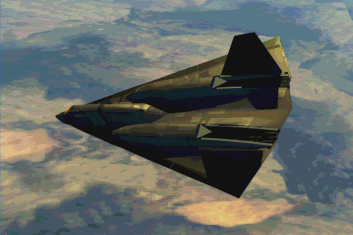
“Pesawat
berangkat dan meninggalkan mobil-mobil yang terparkir di area
parkir berkapasitas 1.600 mobil. Di pengujung hari, pesawat kembali
dan tempat parkir kembali kosong. Begitu setiap hari kecuali akhir
pekan. Sementara itu penduduk San Diego merasakan guncangan.
Meskipun seperti gempa, jelas insiden ini bukan disebabkan oleh
gempa. Tentu saja yang dituding kepada pihak militer pada pesawat
rahasia mereka. Namun dengan tegas pihak militer menyangkal. Mereka
meyakinkan bahwa insiden tersebut bukan disebabkan oleh salah satu
pesawat mereka. Karena itu media pun menyingkirkan kemungkinan
adanya sonic boom”.
“Insiden yang membingungkan ini bukanlah
hal yang baru. Paling tidak sejak tahun 2003, telah terjadi enam
insiden serupa yang membingungkan”.
“Kebingungan sedikit terjawab saat berlangsungnya Farnborough
International Airshow di selatan Inggris Juli lalu. Saat itu Frank
Cappucio menggelar jumpa pers. Cappucio adalah wakil presiden divisi
Skunk Work yang merupakan proyek rahasia Lockheed Martin. Dalam
jumpa pers tersebut Cappucio mempertunjukkan film yang ia sebut
sebagai video promosi dan menambahkan bahwa film tersebut untuk
menunjukkan kepada anak-anak dan keluarga tentang apa yang mereka
kerjakan. Dua menit setelah film diputar, tampak sebuah pesawat
abu-abu tanpa kokpit yang belum pernah dilihat orang. Pesawat yang
menyerupai bomber B-2 tersebut melayang dilatarbelakangi pemandangan
bukit dan pegunungan berbatu nan tandus”.

“Meskipun
tidak secara langsung merujuk insiden membingungkan yang terjadi,
bisa dibilang semua saling terkait. Paling tidak merupakan tanda
yang jelas adanya hubungan antara dunia dirgantara dan militer,
yakni program militer rahasia”.
Tak salah lagi,
pesawat 737 misterius yang dipertanyakan, mengangkut karyawan ke
pusat uji terbang di dekat Groom Lake Nevada. Wilayah yang oleh
publik lebih dikenal sebagai Area51 dan lekat dengan "dunia hitam"
karena penuh rahasia.
Pesawat berwarna abu-abu dalam video
promosi tersebut adalah Polecat (jenis pesawat tempur), generasi
berikut stealth unmanned aerial vehicle (UAV). Orang merasa, jumpa
pers yang dilakukan Cappuccio berikut film yang diputar adalah cara
"licik" untuk mengungkap program yang telah berlangsung selama ini.
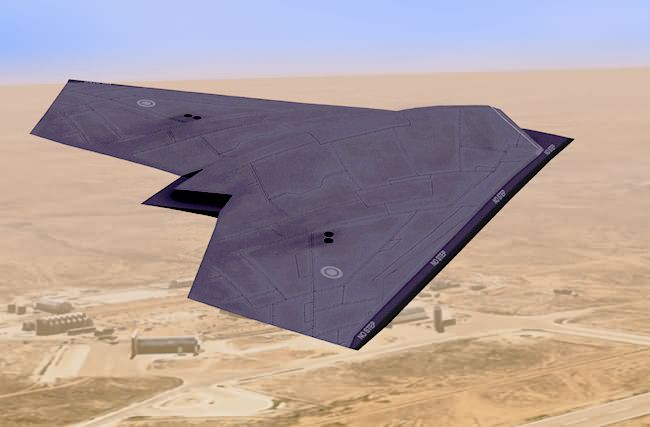
Jadi, guncangan "gempa"
yang tak jelas asalnya kemungkinan besar adalah sonic booms dari pesawat serbu hipersonik seperti selama ini
dicurigai orang. Terutama oleh mereka yang antusias terhadap proyek
rahasia dan antusiastik militer.
Program rahasia
(terklasifikasi) biasanya dikuak untuk mendukung operasi tempur atau
saat teknologinya digunakan program lain. F-117 keluar dari Black
Project ketika Perang Irak pertama kali 15 tahun silam. Sejak itu
hanya tiga pesawat yang diperkenalkan. Yaitu Polecat dan lainnya
adalah pesawat intai Tacit Blue produksi Northrop Grumman yang dijuluki "the Whale".
Pesawat
ke tiga adalah pesawat Boeing, Bird of Prey. Pesawat ini teruji
untuk strategi siluman, termasuk memperkecil bayangan dan kontras.
Isunya bahkan pesawat ini memiliki teknik iluminasi yang
memungkinkan pesawat untuk berbaur dengan latar belakangnya.
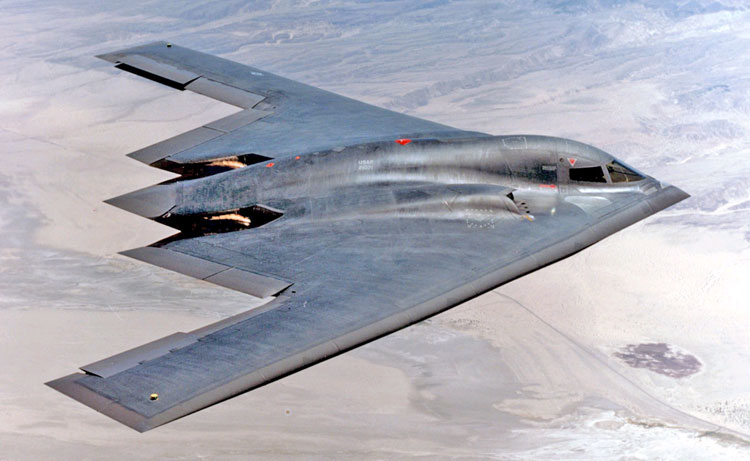
Meskipun
beberapa tahun terakhir program seolah berhenti, kelihatannya
proyek berjalan kembali. Paling tidak upaya itu ditunjukkan pesawat
yang sudah tidak misteri lagi melalui kegiatan akhir-akhir ini.
Kegiatan yang tak terlalu padat ini cukup menunjukkan komunitas
Black Project tidak tidur.
Bahkan disinyalir sedang dibangun
landasan tambahan, serangkaian hangar baru, dan sejumlah bangunan di
Area51. Bukti ini bisa dipantau melalui Google Earth. Alokasi anggaran pemerintah USA
yang tak jelas dan tak terlacak juga meningkat. Anggaran semacam ini
biasa dianggarkan dan kerap menjadi tanda adanya program rahasia.
Peningkatan anggaran berarti peningkatan program rahasia.
Lalu
kenapa harus rahasia? Jawabannya sederhana, adalah penting untuk
menjaga unsur kejutan dalam teknologi yang dikembangkan, berharap
untuk mencegah musuh menciptakan strategi guna melawan teknologi
tersebut. Tantangannya adalah untuk mencari tahu apa yang sebenarnya
terjadi, tanpa mengkhianati keselamatan nasional. Semakin besar
dunia hitam, semakin baik kegiatannya tertutup rapat.

Baru-baru
ini, New York Time akhirnya berhasil membuat laporan mengenai
Area51 berdasarkan pengakuan lima mantan karyawannya. Kolonel Hugh
Slater (87) merupakan mantan komandan markas Area 51 pada era
1960-an. Edward Lovick (90) adalah mantan pakar yang selama 30 tahun
menguji radar untuk pesawat terkenal, termasuk U-2, A-12 OXCART,
dan F-117. Sementara Kenneth Collins (80) adalah mantan pilot tes
pesawat CIA. Thornton Barnes (72) dan Harry Martin (77) merupakan
mantan insinyur proyek khusus Area51 dan yang bertanggung jawab
membangun wahana setengah juta galon persedian bulanan bahan bakar
untuk pesawat mata-mata.
Collins pernah
menerbangkan pesawat paling rahasia keluar dari Area51 dengan kode
nama OXCART. Pesawat itu dibuat oleh Lockheed Aircraft Corporation.
Saat terbang di atas Utah pesawat mulai melintir dan jatuh ke Bumi.
Dia selamat dengan kursi pelontar. Setelah 46 tahun Collins baru
diajak melihat kembali pesawatnya yang jatuh pada tahun 2008.
Sedangkan Lovick merupakan
ahli fisika yang mengembangkan teknologi siluman. Ia mengatakan
tempat itu tidak selalu disebut sebagai Area51. Atasannya pembuat
pesawat legendaris, Clarence L Johnson menyebut fasilitas itu
sebagai Paradise Ranch bagi orang yang mau meninggalkan keluarganya
dan hidup di gurun Nevada yang ganas demi ilmu dan melawan negara
jahat.
UFO & Alien
UFO & Alien

Lalu apakah ada UFO di
Area51? Selama bertahun-tahun misteri Area51 dibawa pegawainya
hingga ke liang lahat. Namun, pengakuan Collins, Lovick, Slater, Barnes dan Martin tampaknya
mengecewakan para Watcher.Mengenai mitos perakitan ulang pesawat UFO
yang jatuh, Barnes memberikan pencerahan. "Kami melakukan
pembangunan ulang banyak teknologi luar, termasuk pesawat tempur
jet Soviet MiG”, katanya. Yang pasti, Pesawat MiG jelas–jelas tidak
mirip UFO.
Lalu
munculnya pesawat mirip piring terbang dari mana? Bentuk OXCART sangat aneh, tebal dan mirip
piring. Bentuk seperti itu karena didesain untuk membawa bahan bakar
dalam jumlah besar. Pilot pesawat komersial yang melintas di atas
Nevada akan melihat OXCART yang berbalut body titanium akan memantulkan
sinar matahari. Apalagi dengan kamampuan bergerak cepat seperti
peluru, tidak heran jika akan menyangka sebagai piring terbang.

Sejalan dengan penelitian pesawat tempur yang canggih, diperoleh pula data-data tentang adanya kehadiran mahluk angkasa yang menuju Bumi, yang lebih dikenal dengan nama Alien. Akhirnya, sampailah kita pada suatu pertanyaan seberapa besar kemungkinan keberadaan Alien di alam semesta ini. Untuk hal itu, Area51 telah terlibat dalam penyelidikan teknologi Alien.
Berdasarkan isu yang santer dan dipercaya oleh banyak pakar, bahwa tim Area51 telah menemukan dan menyelidiki secara rahasia reruntuhan UFO yang ditemukan di daerah Roswell, negara bagian New Mexico, Amerika Serikat, tahun 1947. Walaupun belum terdapat pembuktian yang jelas, beberapa pakar luar telah menduga bahwa ilmuwan Area51 diklaim memiliki dan merawat satu mahluk Alien di suatu tempat yang sangat rahasia.

Klaim tersebut diperkuat dengan pengakuan Bob Lazar seorang fisikawan, pada tahun 1989, bahwa dia telah bekerja disalah satu tempat penelitian yang berada pada daerah selatan Area51 dan mengklaim, bahwa Area51 telah melakukan pengujian pesawat terbang yang luar biasa canggihnya dan juga telah melakukan komunikasi dengan Alien.
Keberadaan Alien di Area51 ini menimbulkan suatu teori konspirasi yang merupakan hasil pengumpulan data dari reruntuhan pesawat Alien yang jatuh di Roswell dan pengakuan Bob Lazar pernah terlibat pada kegiatan tersebut, seperti pertemuan atau kontak dengan keadaan di angkasa dengan menggunakan peralatan secukupnya, pengembangan senjata berenergi sangat tinggi dan kegiatan-kegiatan yang secara luas di seluruh dunia.

Berdasarkan isu yang beredar kegiatan teori konspirasi ini dilakukan di Danau Groom yang berada di sekitar lokasi Area51. Namun, sampai sejauh ini belum ada suatu penjelasan ilmiah yang gamblang dalam menjelaskan keberadaan Alien yang sesungguhnya. Usaha yang bisa dilakukan, adalah mengumpulkan data berupa laporan dan foto UFO hasil jepretan amatir. (",)v
Sumber : misteridunia.wordpress.com, kentdra.freeiz.com, berbagai sumber lainnya
Bangsa Viking

Viking adalah suku bangsa dari "Skandinavia", yaitu yang termasuk di dalamnya daratan Norwegia, Denmark, dan Swedia. Diantara tahun 800 dan 1100 M, mereka menduduki, menjarah, menyisir sepanjang pantai barat laut Eropa, sungai-sungai, dan pulau di Eropa, bagian timur Eropa, serta pesisir timur laut Amerika Utara, sampai ke Rusia, dan Konstantinopel, dalam kapal panjang, untuk mencari dan membawa barang rampasan yang sangat berharga.
Kata Viking dipakai belakangan ini saja, masyarakat waktu itu menyebut mereka dengan "Norsemen" (orang utara), sedangkan sumber-sumber utama di Rusia dan Bizantium menyebut mereka dengan nama "Varangian". Sampai sekarang orang Skandinavia modern masih merujuk kepada diri mereka sebagai "Nordbor" (penduduk utara).

Kata Viking mungkin juga berasal dari kata "Vik", yaitu sebuah kota pusat perompak di Norwegia. Ketika para Norsemen pergi sebagai seorang 'Viking', berarti mereka bertarung sebagai seorang perompak. Bangsa Viking Swedia yang menetap di Eropa Timur, mungkin disebut sebagai "Runs", dan jadilah Rusia sebagai nama mereka.
Para Viking membanggakan diri atas keberanian mereka saat berperang, sebagian besar berperang dengan berjalan kaki dan membawa pedang, tombak, serta kapak, sedangkan, para petingginya menggunakan kuda perang. Pasukan "pengejut" disebut "berserker", merekalah yang memimpin serangan.

Berserker adalah bangsa Norse dengan ciri khas 'tanpa mengenakan baju perang besi', dengan tampang yang bengis dan tubuh yang kekar, serta sifatnya yang brutal. Sebelum berperang, mereka menjadi gila bertempur karena mabuk dan narkotika, serta mempercayakannya pada Dewa mereka, yaitu "Odin" (Dewa Perang Bangsa Viking), agar mereka tetap selamat.
Dewa Odin pada Mitologi Nordik, merupakan pemimpin para dewa, yang memiliki peran, sebagai : Dewa Kebijaksaan, Dewa Perang dan Pertempuran, dan Dewa Kematian. Dia dan istrinya, Frigg, adalah penguasa Asgard, termasuk Valhalla, yang merupakan surga bangsa Viking setelah kematian, tempat dimana mereka akan dijamu oleh Dewa Odin sebagai para pahlawan yang tewas dalam pertempuran.
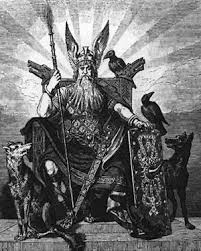
Dewa Odin
Valhalla berada pada Ibukota dari Sembilan Dunia, yaitu Asgard, yang merupakan dunia para Æsir, yaitu golongan Dewa-Dewi tinggi yang paling berkuasa.
Armada Laut

Kapal Viking
Para Viking umumnya terkenal karena merupakan pelaut yang ulung dan tangguh. Kapal-kapal kayu yang mereka buat yang disebut kapal panjang, merupakan sebuah kontruksi kapal laut yang sangat kokoh, ringan, dan mempunyai bagian bawah yang datar, memungkinkan mereka untuk berlayar di sungai yang dangkal dan juga diperairan terbuka. Kapal ini pun mudah dikendalikan untuk perjalanan ekpedisi dengan yang nagivator berpengalaman.
Di Eropa Timur, kapal Bangsa Viking membawa mereka sampai ke pedalaman dan menyusuri berbagai sungai. Mereka bertualang sangat jauh sampai ke daerah Rusia dan Ukraina, kadang-kadang merampok menyisir konstantinopel, yang sering disebut Miklagard / Kota Besar.
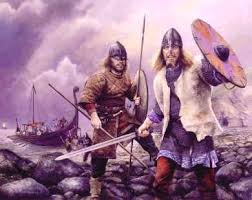
Sedangkan para Viking yang tinggal di Perancis Utara disebut Bangsa Norman. Raja mereka yang terkenal adalah William Sang Penakluk, yang menduduki Inggris di tahun 1066.
Penyatuan Norwegia

Wilayah yang kemudian menjadi Norway (Norwegia), tidak disatukan hingga tahun 800. Namun, sebelumnya sudah ada usaha untuk menyatukannya. Dua jenis komunitas dibentuk, yaitu : majelis atau "tings", yang dikelola disekitar Alting, dan kerajaan-kerajaan kecil.
Tentunya ada beberapa alasan yang mendasari, tidak terkecuali keinginan para petani untuk perdamaian dan stabilitas, terutama di daerah pesisir pantai. Hal ini secara berulang kali di ganggu oleh para perampok dan pelecehan bangsa Viking yang kembali.
Daerah pesisir pantai memiliki kekayaan dalam bentuk barang curian yang diperdagangkan. Para raja dari kerajaan kecil menciptakan pernikahan antar kerajaan, yang kemudian menciptakan kekuasaan yang besar.
Raja-raja kecil di Viken – area yang mengelilingi Fjord Oslo, memainkan peran penting dalam proses ini. Kekuasaan mereka secara tetap terus meningkat setelah distrik demi distrik berada dalam kekuasaan mereka.

Setelah perang di Hafrsfjord dekat Stavanger, kira-kira tahun 872, Raja Harad Fairhair memperkuat posisinya sebagai penguasa area yang lebih besar. Namun, proses penyatuan yang berlanjut selama beberapa abad setelahnya, menciptakan pertarungan antara para pemimpin suku Norwegia, dan antara Norwegia dengan masyarakat lain di Utara. Pada tahun 1060, proses penyatuan diselesaikan.
Legenda

Karena tidak adanya sumber tertulis, maka yang diketahui mengenai jaman ini banyak berdasar pada penemuan arkeologi serta cerita-cerita yang beredar. Walaupun kemudian hal-hal tersebut dituangkan dalam tulisan, cerita tersebut berdasarkan pada dongeng yang diturunkan antar generasi pada Mitologi Nordik, yang merupakan kepercayaan masyarakat Eropa utara (Norwegia, Denmark, Swedia, Islandia) sebelum kedatangan agama Kristen. Secara keseluruhan, cerita tersebut mengungkapkan bahwa pada zaman Viking merupakan yang terkaya dalam sejarah pra-sejarah di Utara, Norway.
Namun, dalam cerita-cerita tersebut, tidak semua Bangsa Viking perompak, di tanah airnya, mereka adalah petani, nelayan, pedagang, dan pengrajin, dan yang paling terkenal sebagai perompak. Diantara mereka banyak yang pergi bergabung bersama perompak dan hidup di Perancis utara, Inggris Utara, dan Irlandia. Kerap kali mereka menyerang Inggris dan Irlandia, lalu menjarah hingga ke Gibraltar dan Mediterania.
Terkadang mereka pun memperdagangkan barang-barang dari hasil rampasan. Mereka ini biasanya para perompak yang seringkali gagal dalam berniaga.
Banyak akademis menganggap, penjarahan biara Lindisfarne pada tahun 793, di pesisir North East England sebagai awal Era Viking. Di bagian Barat dan Barat Daya Eropa, hingga saat ini Viking masih dianggap sebagai penjahat kejam yang menciptakan kekacauan dengan menggunakan api dan pedang. Hanya sebagian dari anggapan ini yang benar.

Viking juga datang secara damai untuk berdagang atau bermukim. Bangsa Viking Norwegia bermukim di Orkney Isles, Shetlands, Hebrides dan Pulau Man. Dataran utama di Utara Skotlandia dan Irlandia juga menjadi daerah pemukiman mereka, serta Dublin yang didirikan oleh Viking pada sekitar tahun 840, yang berada dibawah kekuasaan Nordik hingga tahun 1171.
Di Iceland dan Greenland, Viking Norwegia menemukan tanah kosong, dimana mereka menetap dan membangun komunitas. Iceland saat ini diturunkan langsung dari pemukiman Viking. Namun di Greenland, komunitas Norse meninggal beberapa abad kemudian karena alasan yang tidak jelas.
Bangsa Viking membuat kapal yang kuat dan mudah dikendalikan untuk perjalanan ekpedisi dengan nagivator berpengalaman di laut, secara berkala melakukan perjalanan ke Amerika dan kembali.
Cerita mengatakan bahwa Leif Eriksson yang menemukan “Wineland the Good” pada tahun 1001, namun hingga saat ini para akademisi berpendapat bahwa Viking telah mencapai Amerika sebelum Leif. Era Viking mencapai puncak pada tahun 1066 ketika Raja Norwegia, Harald Hardruler dan serdadunya dikalahkan pada Perang Stamford Bridge di England.

Leif Eriksson, yang dalam saga Islandia dikatakan, keturunan para pemimpin Viking Norwegia yang mendirikan perkampungan Eropa pertama di Greenland sekitar tahun 985, kemungkinan besar adalah orang Eropa pertama yang menemukan Amerika sekitar tahun 1000. Perkampungan yang didirikannya kemungkinan besar adalah di L'Anse aux Meadows, yaitu di New found land dan Labrador, Kanada.
Istilah Abad Viking telah dipakai untuk menyebut periode sejarah Skandinavia dari tahu 800 sampai 1066, yaitu sampai pada kematian dari Harald III Sigurdsson.
Sebutan Viking secara luas dapat pula digunakan untuk menyebut seluruh populasi Skandinavia di Abad Viking beserta perkampungan-perkampungan sebarannya. Sebagai contoh, para pedagang dan perompak di masa tersebut yang berasal dari pantai timur Laut Baltik dalam saga Islandia mula-mula disebut sebagai Vikinger fra Estland, atau dalam bahasa Norwegia ialah Viking Estonia.

Peta Rute Ekspansi Bangsa Viking
Penjelajahan bangsa Viking semakin berkurang dan akhirnya berhenti hingga sekarang yang terdengar hanyalah kisah-kisah keperkasaan mereka dalam menaklukkan lautan lewat sebuah legenda. (",)\m/
Sumber : Wikipedia©, misteridunia.wordpress.com, ectic.blogspot.com, berbagai sumber lainnya
Subscribe to:
Posts (Atom)